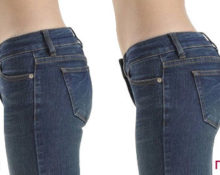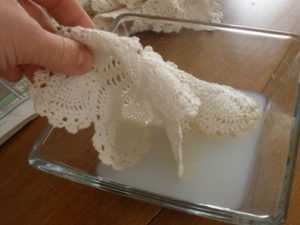 Beautiful lace fabric - the material is light and airy. These qualities make it difficult to maintain the shape of products. In this case, starch will help the material.
Beautiful lace fabric - the material is light and airy. These qualities make it difficult to maintain the shape of products. In this case, starch will help the material.
Starching will not only make patterned fabric stiffer. As a result of processing, the fibers are covered with a very thin film, which makes the lace snow-white. At the same time, the lace wrinkles less, which allows you to maintain its high-quality appearance for a long time.
The starch film also performs a protective function and becomes an obstacle to the penetration of dirt and dust into the structure of the threads.
How to starch lace fabric at home
Not only new lace products can look beautiful. They can be starched at home, adding extra flair and sophistication to the intricate designs.
The work can be done in several ways.
The main method of starching
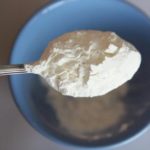 The most common option is to use a special starch solution.
The most common option is to use a special starch solution.
How to prepare a starch solution
A medium liquid starch solution is suitable for working with lace. It is prepared from 1 tbsp.starch and 1 liter of cold water.
Reference! The most common raw material for the solution is potato starch. In addition, you can use another plant base obtained from processed rice, wheat or corn.
- Pour the starch into a bowl, add 1 glass of water (200 ml), mix thoroughly. The result should be a homogeneous mass, without lumps.
- Pour the remaining water (800 ml) into a small saucepan and bring to a boil.
- Without removing from the heat, carefully pour the diluted starch into the pan, stirring constantly.
- The stove is turned off and the solution is allowed to cool to room temperature. The resulting mixture should have medium thickness. If the composition is too thick, you need to dilute it with a small amount of warm water. After this, you can start starching.
How to starch lace products
 The prepared starch solution is poured into a bowl of cool water and the water is mixed.
The prepared starch solution is poured into a bowl of cool water and the water is mixed.- The lace fabric is lowered into the basin and left there for 20 minutes. You need to pay attention to ensure that the entire canvas is soaked evenly. To do this, you can turn the product over several times.
- After the final impregnation of the fibers, the lace is taken out, gently wrung out, shaken off, creases and folds are straightened and allowed to dry.
Advice! If lace fabric is used on one of the items of clothing and only this part needs to be starched, the item is not immersed in the solution. A napkin or sponge is moistened in it and used to treat the element. After soaking it (10 - 15 minutes), the part is ironed with a warm iron through gauze.
Additional ways to starch lace
Immersion in a starch solution is the main, but not the only way to process lace.
If you need to process a small part of the fabric, you can use additional methods.
Aerosol spray
 Cans of starch solution are available for sale. It is sprayed onto the material, and after drying the fabric is ironed. Instead of a ready-made spray can, you can use a spray bottle with starch liquid. It is prepared from 1/4 tsp. starch diluted in 1 liter of warm water. The mixture is boiled for 5 minutes. After cooling, it can be poured into a spray bottle.
Cans of starch solution are available for sale. It is sprayed onto the material, and after drying the fabric is ironed. Instead of a ready-made spray can, you can use a spray bottle with starch liquid. It is prepared from 1/4 tsp. starch diluted in 1 liter of warm water. The mixture is boiled for 5 minutes. After cooling, it can be poured into a spray bottle.
Starching with shine
In order not only to starch the product, but also to give it shine, you need to prepare gloss starch. You will need 5 parts rice starch, 3 parts talc, 1 part borax powder. All ingredients are mixed and combined with a small amount of cold water. The mixture is applied to the lace with a soaked napkin.
Processing with sugar syrup
Sweet syrup (6 tablespoons of sugar per 1 liter of water) is heated to a boil. While the solution remains hot, the lace is dipped into it, left to soak, then dried.
How to starch without starch
You can make lace stiffer and at the same time make it whiter not only with the help of starch. A similar result can be obtained with other available means.
Using PVA glue
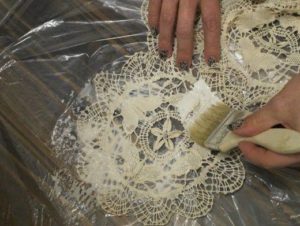 The glue is poured into a container and filled with warm water (proportion 1:1.5). Stir, dip the lace into the liquid, let it soak, and dry.
The glue is poured into a container and filled with warm water (proportion 1:1.5). Stir, dip the lace into the liquid, let it soak, and dry.
Important! PVA-based composition may cause skin irritation. Therefore, it is better to use it for processing parts that are not in direct contact with the body.
Using gelatin
Gelatin is diluted with cold water (1 tbsp per 50 ml) and left to swell. After this, the container is placed in a water bath and heated. Without removing from heat, add 1 tbsp. (200 ml) water, stir until uniform.The composition is suitable for processing crocheted lace. Small parts are immersed in it, large parts are treated with a sponge or brush.
Useful tips for starching lace
- Only pre-washed and dried lace can be starched.
- After processing, lace fabrics are dried only in a horizontal position, carefully laid out on a terry towel. If necessary, the edges of the patterned fabric are secured with needles or pins.
- A small pinch of salt mixed with starch will add shine to snow-white lace.


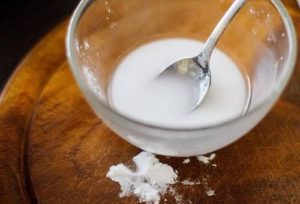
 1
1


